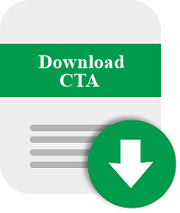MICROFINANCE-ECONOMIC GROWTH NEXUS: A CASE STUDY ON GRAMEEN BANK IN BANGLADESH
DOI:
https://doi.org/10.18196/ijief.112Keywords:
Microfinance, loan financing, deposit, economic growth, cointegration, granger causalityAbstract
Microfinance is one of the fastest growing sectors in Bangladesh and in many parts of the world. Over the last few decades, this sector has been supportive in achieving various socio-economic goals in Bangladesh. The country has made remarkable progress in sectors like education and health, and most importantly it has contributed significantly in poverty alleviation. Although the microfinance mostly concentrates at the micro level, it has direct effect on the macro economy. A forefront Microfinance provider like Grameen Bank has been playing a key role for the socio-economic wellbeing of the people living in the rural areas as well as for the economic development of rural economy. This study aims to investigate the long run dynamic relationship among its loan financing and clients’ deposit and economic growth in Bangladesh. By considering annual time-series data of these variables, a widely used cointegration test and Granger’s causality test have been applied to examine the long run relationship among these variables. The result shows that both financing and depositing aspects of Grameen Bank have positive effect on economic growth of Bangladesh in the long run. It is recommended that Grameen Bank should allow its operations without any external pressure for the sake of sound economic growth of the country.
References
Ahlin, C., Lin, J., & Maio, M. (2010). Where does microfinance flourish? Microfinance institution performance in macroeconomic context. Journal of Development economics.
Chen, G., Rasmussen, S., & Reille, X. (2010). Growth and Vulnerabilities in Microfinance. Washington, D.C.: CGAP.
Gonzalez, A. (2007). Resilence of Microfinance Institutions to Macroeconomic Events. Washington, D.C. : MIX Discussion Paper, The MIX.
Johansen, S. & Juselius, K., (1990). “Maximum Likelihood Estimation and Inference on Cointegration with Applications to Demand for Money”, Oxford Bulletin of Economics and Statistics.
Khandker, S. R. (1996). Grameen Bnak: Impact, Costs, and Program Sustainability. Asian Development Review, 65-85.
Levine, R. (2004). Fianance and growth: Theory and evidence. Massachusetts Ave., Cambridge, USA: NBER Working Paper.
Maksudova, N. (2010). Macroeconomics of Microfinance: How Do the Channels Work? Prague: CERGE-EI.
McGuire, P., & Conroy, P. (1998). Effects on Microfinance of the 1997-1998 Asian Financial Crisis. Brisbane, Australia: Foundation for Development Cooperation.
Pitt, M. M., & Khandker, S. R. (1998). The impact of group-based credit programs on poor households in Bangladesh: does the gender of participants matter? Journal of Political Economy, 958-996.
Rahman, J., & Yusuf, A. (n.d.). Economic growth in Bangladesh: experience and policy priorities.
Rajan, R., & Zingales, L. (1998). Financial dependence and growth. American Economic Review, 559-586.
Reinsel, G., & Ahn, S. (1992). Vector Autoregressive Models with Unit Roots and Reduced Rank Structure: Estimation, Likelihood Ratio Test and Forecasting. Journal of Time Series Analysis, 353-375.
Schuler, S., Hashemi, S., & Riley, A. (1997). The influence of women's changing roles and status in Bangladesh's fertility transition:evidence from a study of credit programs and contraceptive use. World Development, 563-576.
Woolley, J. (2008). Microfinance performance and Domestic GDP Growth: Testing the Resiliency of Microfinance Institutions to Economic Change. Standford Journal of Microfinance.
Yunus, M., & Weber, K. (2007). Creating a World Without Poverty: Social Business and the Future of Capitalism. New York: PublicAffairs.
Zaman, H. (2000). Assesing the Poverty and Vulnerability Impact of Micro-credit in Bangladesh: A case study of BRAC. Washington D.C.: World Bank.
Downloads
Published
How to Cite
Issue
Section
License
License
This journal is based on the work available at http://journal.umy.ac.id/index.php/ijief/ under a license from Creative Commons Attribution-ShareAlike 4.0 International License.
You are free to:
- Share – copy and redistribute the material in any medium or format.
- Adapt – remix, transform, and build upon the material for any purpose, even commercially.
The licensor cannot revoke these freedoms as long as you follow the license terms, which include the following:
- Attribution — You must give appropriate credit, provide a link to the license, and indicate if changes were made. You may do so in any reasonable manner, but not in any way that suggests the licensor endorses you or your use.
- ShareAlike — If you remix, transform, or build upon the material, you must distribute your contributions under the same license as the original.
- No additional restrictions — You may not apply legal terms or technological measures that legally restrict others from doing anything the license permits.
Creative Commons Attribution-ShareAlike (CC BY-SA)

This work is licensed under a Creative Commons Attribution-ShareAlike 4.0 International License.


